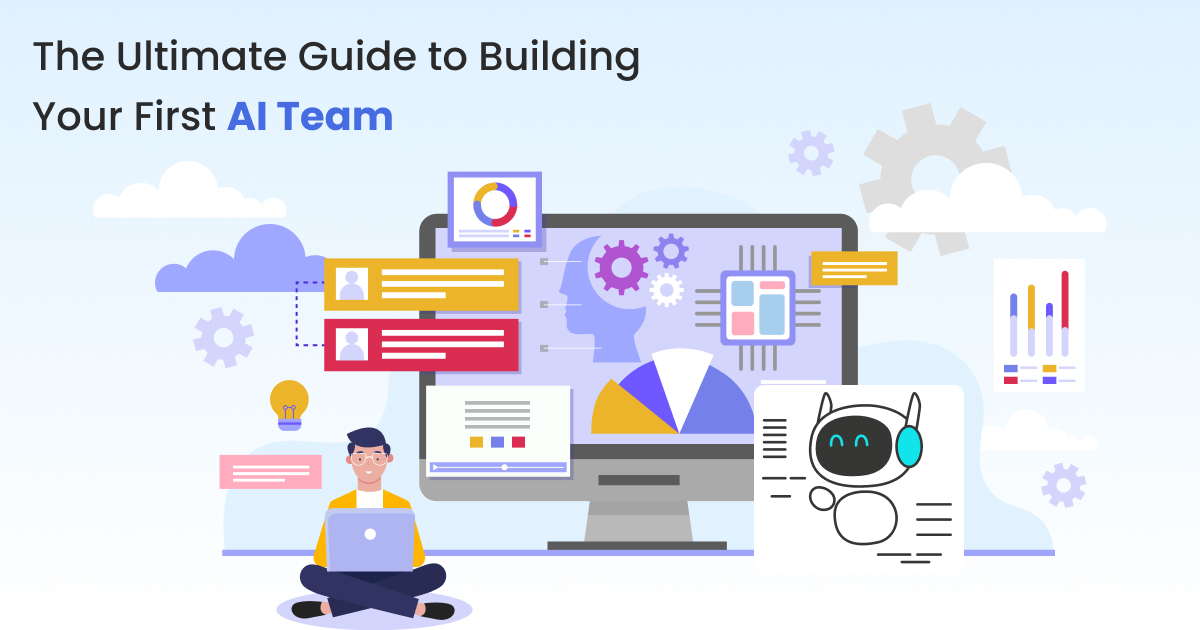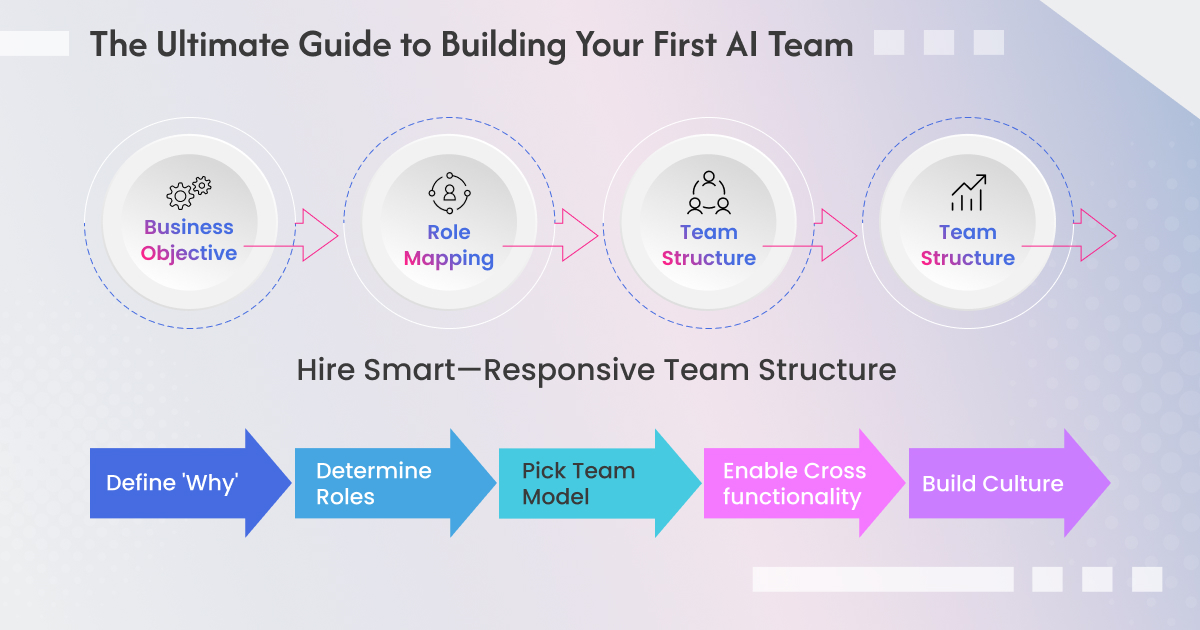The Ultimate Guide to Building Your First AI Team


Before posting job ads, pause and ask: What business problem are we solving, and how will an AI team deliver clear value? Jumping into hiring too early—or hiring the wrong mix—can stall progress. Start with impact.
Outline what success looks like. Whether it’s reducing churn, automating customer support, or forecasting trends, frame your goal using SMART criteria: specific, measurable, achievable, relevant, and time-bound—like “reduce support response times by 30% in 3 months via AI chatbots.”
Not every team needs ML PhDs, but every effective team needs defined roles. Here’s a structured breakdown:
| Role Type | Key Responsibilities | Ideal When |
|---|---|---|
| Data Engineer | Prepares, pipelines, and warehouses data | Your data is messy, siloed, or unstructured |
| ML/AI Engineer | Builds, trains, and deploys models | You need predictive systems or product AI |
| Data Scientist | Extracts insights, visualizations, hypothesis testing | You’re exploring AI use cases & insights |
| Product Manager/Domain Expert | Aligns projects with business needs | You want AI solutions to integrate meaningfully |
| MLOps Engineer | Automates model pipelines, scaling, monitoring | You’re ready to go beyond prototype to production |
| Ethics/AI Governance Lead | Manages bias, compliance, explainability | Your solutions must be trustworthy and fair |
| Executive Sponsor (e.g., CAIO) | Guides AI strategy and governance | You’re committed to AI at organizational scale |
Each model has its merits:
AI doesn’t exist in silos. Effective teams must work closely with engineering, operations, and product. It transforms data into deliverables only when integrated cleanly across disciplines.
AI tech shifts fast. A resilient team is one that learns. Embed continual learning, experimentation, and knowledge-sharing—through workshops, cross-training, or pilot projects.
| Step | Focus Area | Key Outcome |
|---|---|---|
| 1 | Define ‘Why’ | Clear business-aligned AI goal |
| 2 | Determine Roles | Balanced team structure matched to needs |
| 3 | Pick Team Model | Hybrid, in-house, or outsourced based on context |
| 4 | Enable Cross-functionality | Smooth coordination & real-world-ready AI |
| 5 | Build Culture | Future-proof AI skills and adaptive mindset |

Building your first AI team isn’t about accumulating AI job titles-it’s about matching structure to purpose, thoughtfully scaling as your vision grows. Define your ‘why’. Align roles to impact. Select the right structure. Foster collaboration. Uphold continuous learning. That’s your blueprint for a resilient, high-impact AI team.


